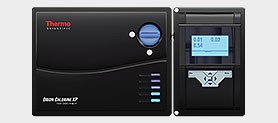The Key to Efficient Chlorine Disinfection: pH
Many systems rely on chlorine to make sure the water is safe from biological contaminants.
If you are testing chlorine in your drinking water system, the question of how much free chlorine and how much total chlorine comes up.
Some terms to know:
- Free Chlorine – this is the form of chlorine that is most effective in disinfecting your water supply.
- Combined Chlorine – this is chlorine that’s been used during the decontamination process, which reduces its ability to sanitize compared to free chlorine.
- Total Chlorine – total chlorine is the sum of both free chlorine and combined chlorine.
- Breakpoint Chlorination – the point at which the disinfection demand has been met, or all undesirable contaminants, have been oxidized.
- pH – The Key to Efficient Disinfection

For drinking water systems that practice breakpoint chlorination, it’s essential to understand the relationship between pH and the effectiveness of chlorine disinfection—the “killing power” of free chlorine increases as the pH decreases. If you sample the pH in the distribution system, you may see that it is different in various areas. Many factors can influence the pH.
Various instrumentation devices can help you understand pH levels and how they impact your chlorine disinfection.

CC Lynch recommends an online chlorine analyzer that can also monitor pH. It can be installed remotely and transmit the Chlorine and pH readings to a convenient location, saving you the hassle and cost of frequently traveling to remote sites. It uses the well-known and very reliable DPD method to detect chlorine.
If you frequently travel to remote sites for sampling, switching to our remote analyzer will pay for itself within the first year. Contact us today for more information or request a quote.
